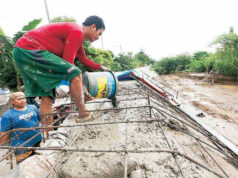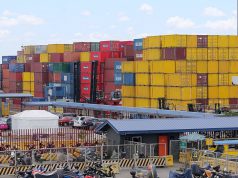A WIDER COVID-19 quarantine and more restrictive lending conditions worldwide pose the main risks to the Philippine economy, threatening to bring growth to their lowest levels since 2011, Fitch Solutions Macro Research said.
Fitch Solutions reduced its growth outlook for the Philippines to 4% earlier this week from the already-downgraded 6% estimate issued in February.
The estimate points to a further slowdown from the below-target 5.9% performance in 2019, and a failure to meet the government’s original growth target of 6.5-7.5%. Officials have flagged possible revisions to the target in the wake of the enhanced community quarantine (ECQ) in Luzon, which accounts for 70% of Philippine gross domestic product (GDP).
“While we do not expect a shock to the magnitude of the global financial crisis (GFC), the outbreak is likely to drag on the Philippine economy into Q420-Q121 and as such, we now see growth coming in at its slowest pace since 2011,” Fitch Solutions said in a note Thursday.
GDP growth in 2011 was 3.7% largely due to government underspending on infrastructure and also due to external economic problems.
Fitch Solutions noted that the Luzon ECQ, which started on March 15 and is set to end on April 12, was intended to arrest the spread of the virus, but will have the side effect of suppressing economic activity.
“(A)s data from China has shown, such restrictions result in a sharp contraction in domestic activity, with household consumption and investment activity collapsing,” Fitch Solutions said.
Although lower oil prices could somehow offsetting lower growth, Fitch Solutions said consumption will also be dented by weaker remittance flows, which helps power household consumption.
Cash remittances from overseas Filipino workers rose 6.6% in January to $2.649 billion, according to data from the central bank. However, analysts have warned that the next months could see a strain in inflows due to the pandemic.
“With remittance flows likely to slow more aggressively as the outbreak spreads to the US, which accounts for around 40% of remittances, a valuable driver of household consumption will shrink,” Fitch Solutions said.
Fitch Solutions also expects reduced income for self-employed workers, who make up 25% of the labor force, as well as a rise in unemployment due to the pandemic’s impact on tourism and cash flow difficulties for small and medium enterprises during the lockdown.
Economic recessions in the coming months will spil lover into exports and fund flows from overseas, Fitch Solutions said.
“Such a widespread drop in global growth will feed through to a sharp drop-off in foreign direct investment (FDI) inflows and a weakening of remittances, which combined account for around 10% of GDP,” Fitch Solutions noted.
FDI inflows fell 23.1% to $7.647 in 2019, dampened by global uncertainty and weak investor sentiment due to uncertainty over the future shape of Philippine tax reforms.
Fitch Solutions said that the Philippine’ twin current account and fiscal deficits points to a shortage of domestic savings and reliance on foreign funding as a growth booster.
“However, with FDI inflows likely to stall and remittances to be hurt as unemployment rises globally, we expect the Philippines to face harsher funding conditions,” Fitch Solutions said.
The current account was in deficit by $464 million in 2019.
Meanwhile, the budget deficit widened to P660.2 billion from P558.3 billion a year earlier, as the government spent aggressively on infrastructure projects.
Fitch Solutions said the peso is among the best performers among emerging market currencies on the back of ample reserve buffers that safeguard it against sell-offs.
The peso ended trading at P51.07 on Thursday against the P51.14 close on Wednesday, according to the Bankers’ Association of the Philippines. — Luz Wendy T. Noble



